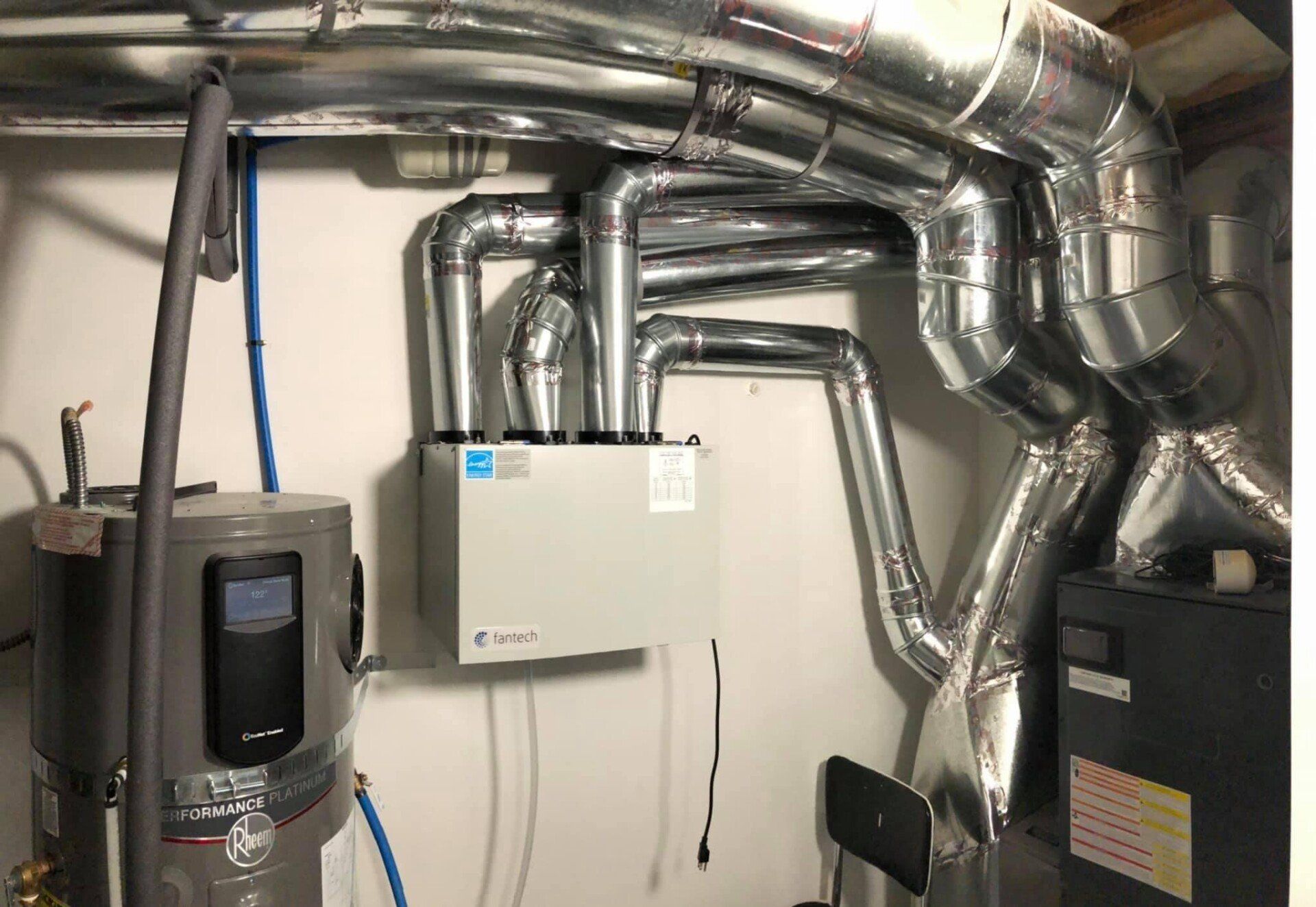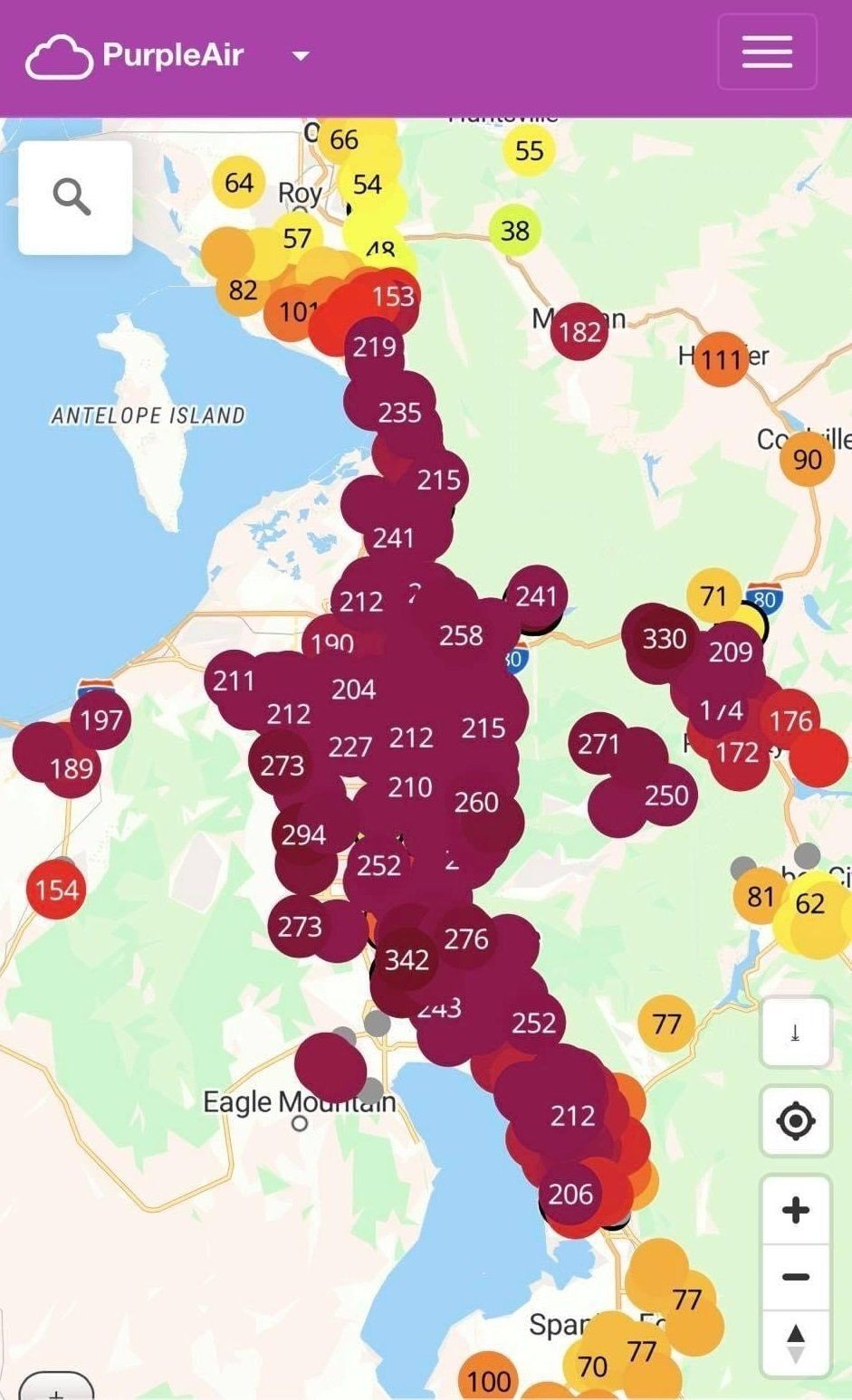Published 11/12/2021:
Heat Recovery Ventilator (HRV)
If a building is too airtight, the air inside can become stale. Also humidity levels can build up which could lead to mold growth. Smells and VOCs (volatile organic compounds that out-gas from the materials in our homes), don’t have a way of dissipating either. All of this can lead to extremely unhealthy air inside the home.
What’s the point of making a house energy efficient if the air inside the home is just going to make you sick?
We need a way to bring in fresh air from outside and vent the unhealthy, stale air inside the house, out. But in the winter time, venting heated air and bringing in frigid air would waste a lot of heated air and require more energy to heat all the cold air. This would also defeat the purpose of making the house air tight in the first place. The same goes for summer time when you would be venting conditioned air from the inside and bringing in hot air from outside.
The only solution is to hold strong to the perfectionist fallacy by keeping the status quo of continuing to make homes inefficient and leaky. Right?
Who's with me?
Nah!!!
Enter the heat-recovery ventilator or HRV
An HRV is an amazing device because it is able to transfer most of the heat from one air source to another air source, without mixing the two air streams. In this manner fresh air can be brought in and stale air can be vented out, while preserving most of the energy used in conditioning the inside air.

Air flow diagram of an HRV being connected up a the home's forced air system
Since my house was designed to have low leakage to the outside. I went with an HRV as well. Mine's a Fantech FLEX 100H.
The mechanical room kind of looks like a pipe organ now.

HRV installed in the mechanical room

Inside of HRV with arrows showing air flow
While not 100% efficiency, amazingly the energy transfer is in the 60-80% efficiency range depending on the air flow rate.
Indoor Air Quality vs. Outdoor Air Quality:
Living along the Wasatch front in Northern Utah, the fresh air outside is often very polluted and unhealthy to breathe. Fortunately the HVAC air handler system has a large, MERV 13 grade air filter, so the harmful PM 2.5 (and larger) particulates in the air coming in from outside, are filtered out before being circulated throughout the house.

Utah Air Quality August 9, 2021

See the green circle? That's the air quality inside my house.
I also have a Purple Air pollution monitor located inside the house so we can see at a glance how good the air quality is inside the home.
As you can see in the pictures above (taken during on Aug 8, 2021 when lots of fires were polluting the air), the air tightness of the home and excellent indoor air filtration is keeping the air inside our house in the green, healthy range even though the air quality outside is horrendously unhealthy to breathe.
I also bought an air analyzer meter that measures the concentration of carbon dioxide in the air, VOCs and other contaminates. Whenever this meter reads a higher reading of undesirable gasses and particulates, I can run the HRV for a few minutes to freshen the air inside the house. Sometimes a house just smells funky for some unknown reason. Running the HRV eliminates odors and freshens the air.
Poor Indoor Air Quality:
Sometimes regular cooking of a meal in the kitchen or accidentally burning something on the stove or in the oven will cause the indoor air quality to suffer. Grilling and frying foods tends to spick the air quality the most. Typically the filtration of the HVAC's forced air system will clean up the air inside in a matter of hours, but running the HRV greatly speeds up that process.
Except for times mentioned above, over the past 2 years of living in this home, the air quality inside the home has been very good.
I have yet to fully automate the HRV system. So running it is still partially a manual process of pushing a button that then runs it for a 20 minute period. This activates the HVAC's air handler as well.
Because the HVAC air handler is programmed to run on its own, 20% of the time (12 minutes each hour), and since the indoor air filter is of such high quality, the air inside the house feels fresh most of the time.
On average, I summon the HRV to run a 20 minute ventilation session 3-5 times each week.
Possible Energy Efficiency Improvements:
I suspect that running bathroom fans and running the clothes dryer (several load of laundry each week) have contributed to more fresh air making its way inside the home. This has probably contributed to a lower incident rate of having to summon the HRV.
On an energy efficiency standpoint, venting bathroom fans directly outside is a waste of conditioned air.
I were to build this house again, instead of direct venting bathroom fans outside, I would instead route them to the inside air intake port of the HRV first.
I knew this ahead of time but for some reason completely forgot to do it when doing the rough electrical and HVAC ducts.
I can't think of a safe way of re-capturing clothes dryer exhaust air, without it clogging up the heat exchanger with dryer lint and causing a fire hazard. It could probably be done but would require constant maintenance and awareness of the lint buildup. This may be a good project for another day.
Power Requirements:
The HRV runs on 120 VAC and draws about 123 watts whenever it runs. However since I wired it so the HVAC air handler also kicks on, total ventilation power draw is about 308 watts.
Since I'm also kind of OCD about phantom power draw (this model HRV draws 3.8 watts in standby), I plugged it into a timer switch that runs it only when it is needed, effectively unplugging it when it’s not in use.
